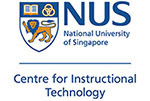Educators have always searched for ways for making lessons interactive, as this is key to keeping learners involved. The modern lecture theatre is designed to facilitate learning but there are gaps which prevent lessons from reaching their full potential. KEEpad helps plug one of these gaps.
KEEpad KEE stands for Keep Education Engaging is a group and audience response system which enables a high level of interactivity in lecture theatres and classrooms. The interactivity that KEEpad offers is just one of the benefits of the system. With interactive questions, lecturers can instantly gauge the understanding of their students during a lesson. Educators can even create questions on the spot within PowerPoint, if interesting ones comes to mind. Ultimately, KEEpad's interactivity helps increase student participation and knowledge retention.
To get an idea of how KEEpad works, recall Ask the audience in the television game show, Who Wants To Be a Millionaire? Similarly, KEEpad recreates this scenario in a lecture or classroom environment. A lecturer creates a PowerPoint with questions prior to the lesson. During the lesson, each student is equipped with a wireless response pad. When the question slide comes up, the students can key in their answers using the pad. The responses are collated, appearing instantaneously as a percentage on the PowerPoint slide.
KEEpad does this through ingenious software and hardware solutions. KEEpad's TurningPoint software is a plug-in which integrates with PowerPoint. You can create a new presentation or make use of your pre-existing presentations and add questions to them almost as fast as you can think them up. Hardly any training is required to start using the KEEpad software.
While the software solution is simple, it has many power-user features for the questions. For example, you can set a time limit for the students to answer the questions. The software also allows for collation and analysis of answers to facilitate lesson planning. These reports are automatically generated as Excel files.
As with the software, the hardware is simple to set up and use. The radio frequency (RF) version of the hardware consists of a thumbdrive-size USB RF receiver and the required number of RF-enabled keypads, which are slightly larger and thicker than a credit card. These can be deployed quickly, do not take up much space and do not require line-of-sight to work.
The Yong Loo Lin School of Medicine is currently in the process of procuring a pilot set of KEEpads for use in their lectures.

